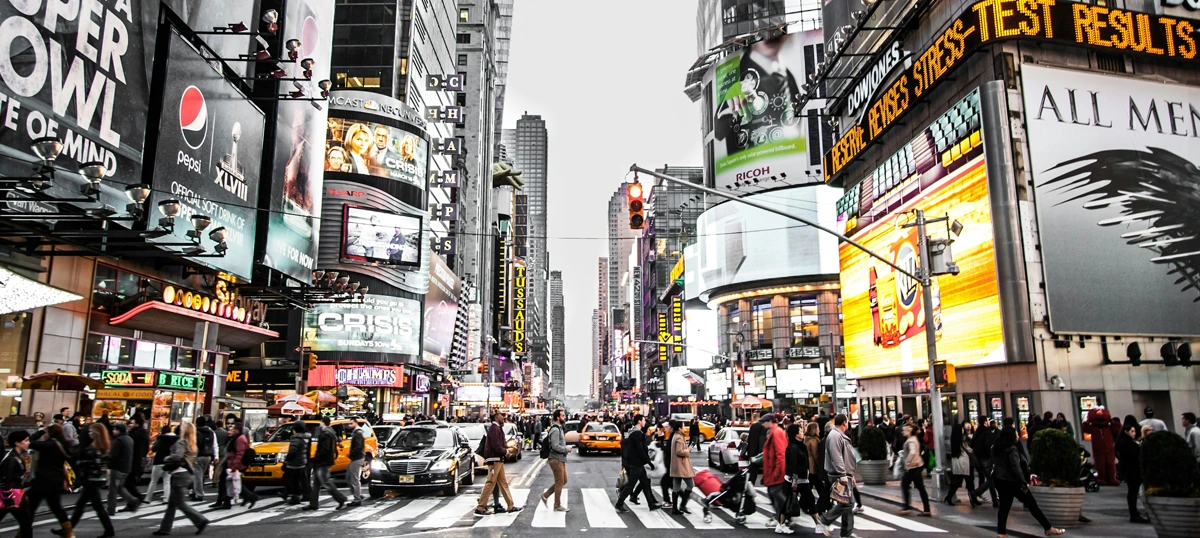
Marketing to Tourists in Kelowna’s Busy Season
August 22, 2024
The Power of Unconventional Marketing Strategies
October 8, 2024As a business owner, you’ve likely faced the question of where to invest your advertising dollars: Should you focus on digital or physical advertising? The truth is that both approaches have their merits. But to make the most of your marketing budget, it’s vital that you understand the differences between these two strategies and how they can be tailored to suit your business needs. In this post, we’ll dive into the advantages of both digital advertising and traditional physical methods, offering helpful insights to guide your marketing strategy.
At Buzz Marketing, we specialize in helping businesses like yours develop effective marketing strategies, whether it’s through digital ads or physical campaigns. Our goal is to help you reach the right audience, increase brand awareness, and ultimately grow your business. Let’s break down what each type of advertising offers and how to make the best choice for your business.
What Is Digital Advertising?
Digital advertising refers to any marketing that takes place online. It includes a wide range of formats, from search engine marketing and display ads to social media advertising and video content. With billions of internet users globally, digital platforms offer businesses unprecedented reach and the ability to target specific demographics.
Some of the main types of digital advertising include:
- Search Engine Marketing (SEM): This includes placing ads on search engine results pages (SERPs), like Google Ads. When people search for a relevant product or service, your ad appears, helping drive website traffic.
- Display Advertising: These are visual ads that appear on websites, apps, or social media platforms. Display ads often include images, banners, and video content aimed at catching the eye of the target audience.
- Social Media Advertising: Platforms like Facebook, TikTok, Instagram, and LinkedIn allow businesses to get in front of users based on their interests, behaviours, and demographics. Social media platforms are a powerful and dynamic tool for establishing brand awareness and driving engagement.
- Video Ads: With the increasing popularity of platforms like YouTube, video content is an increasingly important part of the digital marketing landscape. Video ads allow businesses to tell a compelling story while promoting their products or services.
Benefits of Digital Advertising
- Targeted Reach: One key advantage of digital advertising is the ability to target specific audiences. With powerful tools like Google Ads and social media targeting, you can ensure your ads are served to the potential customers who are most likely to engage with your business.
- Measurable Results: Unlike physical advertising, digital ads offer real-time analytics, offering you the ability to track metrics such as click-through rate (CTR), conversions, and return on investment (ROI). This data should inform your marketing strategy and help you make key decisions on future campaigns.
- Cost Efficiency: Budget is often a concern for small and medium-sized businesses. Online advertising has the opportunity to be more cost-effective than traditional physical methods because you only pay when someone clicks on your ad or engages with your content.
- Flexibility and Speed: Digital campaigns can be launched quickly and adjusted as needed. If you need to tweak your message or target a different audience, it can be done in real-time without the long lead times often associated with physical advertising.
- Enhanced Engagement: Digital ads, especially on social media platforms, offer opportunities for interaction. Customers can like, share, comment, and click through directly to your website, allowing for deeper engagement with your product or service.
What Is Physical Advertising?
Physical advertising includes any marketing that reaches potential customers through traditional, offline means. This can involve billboards, print ads, direct mail, flyers, signage, and more. While digital advertising may dominate today’s marketing landscape, physical advertising remains a valuable tool, especially for local businesses that want to capture the attention of foot traffic or specific geographic areas.
Examples of physical advertising include:
- Billboards and Outdoor Ads: Large, eye-catching displays in high-traffic areas are a common physical advertising strategy. These can help build brand awareness and keep your business top of mind.
- Print Ads: Newspapers, magazines, and brochures are traditional forms of advertising that can still be effective, particularly for businesses targeting a specific demographic.
- Direct Mail: Sending promotional materials directly to potential customers’ homes can be a personal and effective way to reach your local target market, especially when combined with digital marketing efforts.
Benefits of Physical Advertising
- Tangible Impact: Physical advertising is something your audience can see, touch, or even take with them. This creates a lasting impression, particularly for businesses targeting local communities or specific regions.
- Local Focus: If you’re trying to capture a local audience, physical advertising is a powerful way to get in front of the right people. Whether it’s through local billboards, signs, or flyers, physical advertising can help businesses that rely on foot traffic and regional customers.
- Brand Authority: Physical ads often convey a sense of permanence and credibility. Seeing your business advertised on a billboard or in a magazine can lend authority and trust to your brand.
- Less Competition: While digital advertising can sometimes feel crowded, physical spaces may have less direct competition. This gives your business the opportunity to stand out in a specific area where fewer ads are competing for attention.

Digital vs. Physical Advertising: How Do They Compare?
When comparing digital advertising to physical, it’s important to consider your goals, audience, and budget.
- Audience Reach: Digital advertising allows you to reach a global audience of internet users, while physical advertising tends to focus on local or regional areas.
- Cost: Digital ads can be more cost-effective because you pay based on engagement, such as clicks or impressions. Physical advertising, on the other hand, typically has higher upfront costs, especially for billboards or print ads.
- Targeting: Digital marketing excels at targeting specific audiences based on demographics, behaviours, and location. While still effective, physical ads are generally broader in their reach.
- Measurability: Digital ads come with a wealth of data, making it easy to track performance through metrics like click-through rate, website traffic, and conversions. Physical ads don’t offer this level of real-time tracking but can still be measured through tools like coupon codes or customer surveys.
The Power of a Multi-Channel Approach
For most of our clients, combining digital and physical advertising is often the most effective strategy. Each method has its strengths, and when used together, they can complement one another to create a comprehensive marketing strategy.
For example, a local business might use display ads and search engine marketing to drive website traffic while also using billboards or flyers to promote a grand opening event. The key is to align both methods with your overall business goals and to ensure consistency in your messaging across all channels.
At Buzz Marketing, we understand the importance of using both digital and physical strategies to grow your business. We work closely with our clients to develop customized plans that combine the best of both worlds, ensuring you reach your target audience with precision.
Buzz Marketing: Your Partner for Success
Whether you’re ready to launch a digital marketing campaign or explore physical advertising options, Buzz Marketing is here to help. Our team of diverse marketing experts specializes in creating tailored strategies that meet your unique business needs, helping you increase brand awareness and drive customer engagement. From managing Google Ads and helping with Search Engine Optimization to creating effective designs for physical campaigns, we have the tools and expertise to make your business stand out.
Choosing the Right Strategy for Your Business
The decision between digital advertising and physical advertising depends on your business goals, target audience, and budget. While digital ads offer precision targeting, flexibility, and measurable results, physical ads provide tangible, lasting impressions and local focus. For many businesses, the most effective approach is a blend of both strategies, ensuring you reach your audience wherever they are.
At Buzz Marketing, we’re committed to helping you navigate the complex world of advertising. Let’s work together to build a marketing strategy that drives real results for your business. Contact us today to learn more about how we can help you grow.

































